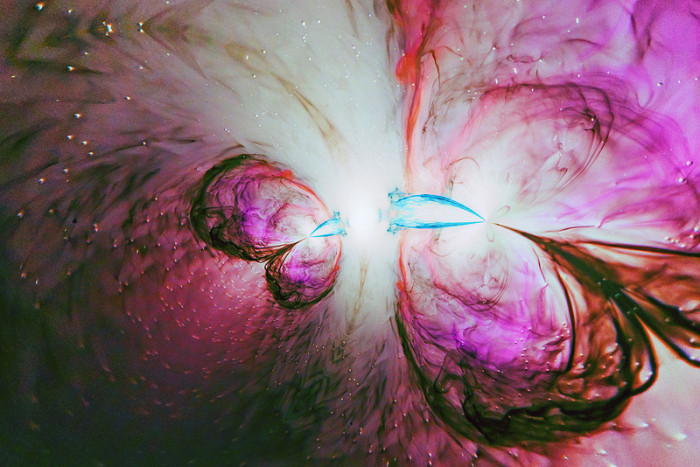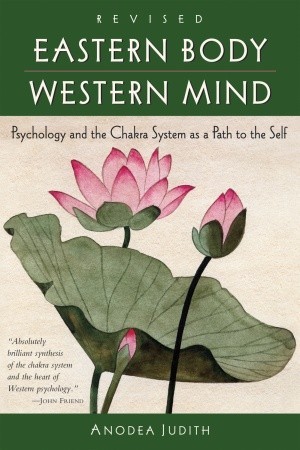What do you think of when you hear “yoga’? Whether you have a deep, long-time practice, a vicarious one—does wearing yoga pants count?—or something in between, the word probably conjures some combination of bending, twisting, and being upside down, of sweating and breathing and finding your center. These are the images of yoga that have entered mainstream culture in the United States, and they are all accurate to a certain degree.
In my yoga practice, which began about five years ago during an especially fraught time in my life, I fall somewhere in the middle of the Yogi spectrum. I go to class regularly and found that when I don’t, my whole week is thrown off. I thrive on the mantras my teachers set and the sense of well being I obtain from pushing my body to new limits. The day I did my first hand stand (albeit with some assistance) was one of the happiest I can remember.

Recently, two things have jolted me out of this haze of yoga complacency—things that made me seek something more from my practice that I barely knew were missing. First, I sustained a now-long-term injury after stretching too far during one class, which was wholly unexpected given my many years of dance training. Usually, no matter where I parked my mat in the studio I became the demo-Gumby for poses requiring deeper flexibility. But a few months ago I was in a wide-legged seated forward bend and felt something pop that definitely shouldn’t have. Let’s just say my range of motion hasn’t been the same since. Second, I noticed tension creeping pervasively throughout my upper body–my shoulders, back, and chest, and even my jaw. No matter how conscious I was of “letting go” mentally and physically, no matter how many projects I successfully completed at my job, I couldn’t stop gripping. My body felt contorted and tortured. It was telling me something was wrong.
Enter the chakras, one of the most powerful and essential components to any yoga practice and, as I’m now discovering, to a balanced and happy overall life. “Chakra” is a word sprinkled throughout common discourse almost as frequently as “yoga” itself; opening or clearing your chakras seems to be the panacea for maladies big and small. Like many, I imagine, I’d been instructed to draw attention to my chakras in many a yoga class: fish pose (imagine lying on your back on the beach getting a tan, propped up on your elbows with the crown of the head on the floor) opens the throat chakra, upward facing dog the heart chakra, and so on. It was somehow clear to me that what I was doing in these poses was opening various energy centers in my body that can be closed in the positions we most often find ourselves, such as sitting bent over at a desk all day or being squished in crowded vehicles of mass transportation.
 Around the time of my leg injury, my yoga instructor began devoting each class to a specific chakra, tailoring the sequences to these seven areas of the body. She also frequently referenced a book by Anodea Judith called Eastern Body, Western Mind: Psychology and the Chakra System as a Path to the Self. By the time the seven weeks of chakra-focused classes ended, I was convinced that I needed to know more about these mystical parts of myself, and that somehow that knowledge would help my recovery and deepen my yoga practice for the long-term.
Around the time of my leg injury, my yoga instructor began devoting each class to a specific chakra, tailoring the sequences to these seven areas of the body. She also frequently referenced a book by Anodea Judith called Eastern Body, Western Mind: Psychology and the Chakra System as a Path to the Self. By the time the seven weeks of chakra-focused classes ended, I was convinced that I needed to know more about these mystical parts of myself, and that somehow that knowledge would help my recovery and deepen my yoga practice for the long-term.
Judith’s book is a wonderful introduction to those who might be skeptical about Eastern philosophy, myself included. Her background in psychology (in which she holds a Ph.D., along with a slew of other degrees) allows her to present the chakra system with a Western focus, drawing on ideas from psychoanalysis, Jungian therapy, and even metaphysics—terms that we might be more familiar with than the vague, sometimes stigmatized notion of a spiritual self. The overlap between these two seemingly disparate modes of thought and being is remarkable. From page one, I could see how some of the issues I’d been thinking about throughout my life regarding the affects of my family environment, the pressures of Western society, and various other environmental and genetic factors would translate into working on my chakras.
The Basics
Right away, Judith gives readers a comprehensive overview of the what, where, how, and why of the seven chakras. The word “chakra” translates to “wheel” or “disk,” and in our bodies they are spheres of energy that stem out from the spine from the base through and out the top of the head. Each is associated with a different element, state of consciousness, universal principle, and color, but they are all connected in the transfer of energies upward and downward. Ideally, they are balanced between and within themselves.
The three lower chakras relate to physical, practical matters, while the four upper chakras are more mentally and metaphorically focused. To move up the chakras is to ascend a ladder to higher states of consciousness. This is why they are often thought of as a bridge as well—one with seven elements, like a rainbow—that, when crossed, will lead to a truly enlightened state. According to Judith, working with our chakras lets us “become the Rainbow Bridge—the living link between Heaven and Earth.” Like the Rainbow goddess Kundalini, who represents each person’s inner life force, we will spin along our chakra disks up along our central axis and be reunited with our divine selves.
Reading this, I realized that understanding the chakras would be no small task—I had not had in mind that nursing a pulled muscle would lead to anything resembling divinity. It seemed wisest to space out my enlightenment, to enjoy the process and go deep enough into each area one at a time.
Chakra One: Muladhara
Since there’s no better place to start than at the beginning, I began with the first chakra. Located at the base of the spine, it is also referred to as the root chakra. It literally grounds us, connecting us to the earth as physical beings in the universe. It is from where issues of the body most commonly stem, too, as muladhara is the place where our physical identities and sense of self-preservation is enabled. Its color is red—the slowest vibration on the light spectrum.
Forming while we are in the womb through age one, muladhara is greatly influenced by anything that happens during our first living moments: from what our mothers did and felt during pregnancy, to injuries and how we, as extremely needy yet wholly dependent creatures, were cared for by our families and those closest to us. These people who first influenced us as babies are our roots for all future social interactions, and ultimately shape relationships at every age. When these roots are not supportive—and our needs not sufficiently met—issues with survival arise. We become vulnerable to the first chakra demon, fear, the opposite of the stability and security established when the root is healthy. This fear makes us question or ignore the self-care we need to sustain and acknowledge our bodies.
Those with excessive first chakras—which draw too much energy so that the flow is blocked both upward and downward, and thereby unable to change—have difficulty letting go of things. Neglected, abandoned, or deprived of basic sustenance, they are anxious that whatever they do have will be taken away and thus hoard until there is too much: too much food, too many things, too many goals and routines. Their bodies are solid and heavy; their personalities rigid and cold; their outward appearances meticulous to the point that they have a shield around them blocking all relationships.
Those with deficient first chakras—where the chakra is so contracted it disperses, rather than draws in, energy, causing a chaotic, inconsistent flow of energy throughout the body—have little or no connection to the ground. Turning inward toward the mind and also with the body, they may sit hunched and pulled in and anxiously flit about when they walk or move their limbs. They can be disorganized, sloppy, and unfocused but highly intelligent, existing in a dream world of disembodied ideas and concepts while their physical bodies wane and become thin, sallow, and dry.
As is true for all the chakras, imbalances manifest themselves uniquely for each individual, including being both excessive and deficient depending on one’s particular life history. Judith describes a general remedy for the first chakra that involves solving problems of survival, from where you live and your financial stability to how you feed and care for your body. It requires reclaiming one’s right to be here on the earth, to embrace and nurture this vessel of our soul. After all, how can we hope to ever connect to chakra seven—wisdom and self-knowledge—without a self to know?
Simple grounding exercises are one way to put this into practice. Start with the feet: roll a tennis ball or foot roller along the soles to open this point of contact with the earth and the means through which we move upon it. In yoga, stand in tadasana (mountain pose), which requires planting the feet into the mat and holding the body fully erect and present. Other poses include bridge pose, warrior poses, and standing forward bend, all of which lead to trusting the ground below us as a base of support and way to direct energy downward. Any kind of touch—such as massages—will also help reconnect with the sense and ownership of the physical body.
Fortuitously, chakra one was a great place for me to begin my path to self-awareness because I could identify with many of these imbalances in my body and life. This week, I’m focusing on how I can feel more grounded with each step I take and, spiritually, move beyond things that happened in my early childhood to reclaim and replant my own personal roots. I never noticed, for example, that I often stand on only part of my foot, with the toes or outer edges raised rather than the sole flat and weight-bearing. Who knew that this imperceptible tic was symptomatic of so much more?
Check back next week for the next steps in my chakra journey, where I’ll explore the sweetness and lustrous gem—the second and third wheels spinning on the Rainbow Bridge.
Next: The Chakra System and You – Part II
Also in Holistic: Ayurveda for Vegans
5 Flavors of Food to Balance Your Qi and Restore Your Health
Also by Jennifer: How to Set Goals for a Happier Life
____
Photo: Paul Anglada via Flickr




